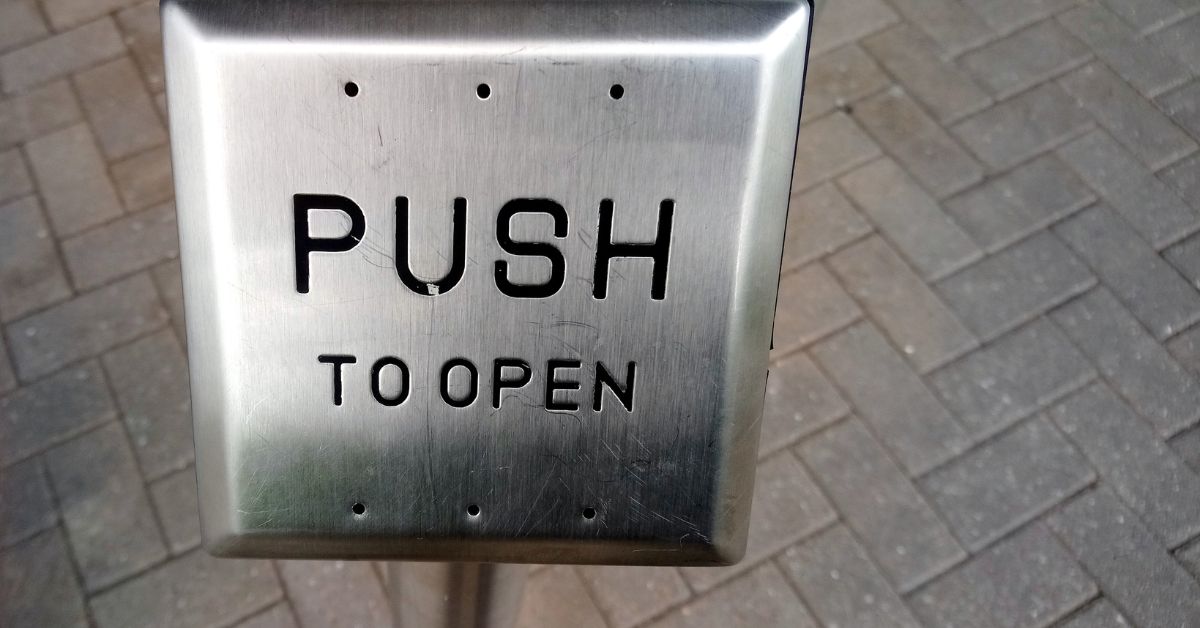The Differences Between Low- and High-Energy Door Operators

What Are Low- and High-Energy Door Operators?
Door operators automate the opening and closing of doors, using motors and sensors to control the process. Low-energy models move at a slower pace and require purposeful activation, typically through buttons or switches. These operators excel in settings like small offices or medical clinics where traffic is usually light and where people need a quiet, focused atmosphere.
On the other hand, high-energy systems respond quickly through motion sensors. Therefore, they cater to fast-paced environments, such as airports or shopping malls, that experience rapid and continuous movement.
Key Differences
The key differences between low- and high-energy door operators are functionality and speed. Low-energy operators rely on manual triggers like push plates to activate them, and they open at reduced speeds. They suit settings that need predictable and calm door movement. Conversely, high-energy operators act quickly and integrate technologies such as sensors to support environments where efficiency is the most important.
Traffic volume also separates these two styles. Low-energy systems do well with intermittent traffic, while high-energy doors can handle crowded entry points. Noise levels also differ, with high-energy operators generating more sound due to faster operation.
Benefits and Drawbacks
Low-energy door operators excel in low-traffic environments. Additionally, their design supports energy efficiency, as they only activate after a user engages a push-button or similar device. However, low-energy door operators can become less practical in busy settings. Their slower activation and manual operation process could delay or inconvenience large groups of people.
High-energy door operators handle high traffic demands. These systems suit spaces requiring hands-free and immediate door openings. High-energy doors use motion sensors or touchless activation to respond quickly, ensuring smooth and safe crowd flow at any time. However, like all door hardware, high-energy operators come with drawbacks. Their upfront installation costs surpass low-energy systems due to the advanced technology and durable components involved. Additionally, they are noisier and can disrupt quiet environments, like libraries or specialized health facilities. Still, the convenience and reliability high-energy operators provide in busy areas often outweigh these concerns.

Cost Influences
Lower installation and operational costs make low-energy door operators an attractive solution for smaller businesses or spaces with light traffic. Their electronic systems and hardware require fewer resources to install.
High-energy door operators require a larger financial commitment due to their advanced technology and durable designs. These systems include features like precision motion sensors and robust construction to manage daily activity. Commercial properties requiring specialized adjustments for broad entryways, like shopping centers or sports arenas, must include customization costs in their calculations. Additionally, continuous activation due to large flows of traffic, combined with fast-moving mechanics, increases electricity usage in high-energy operators.
Safety Features
Low-energy door operators enhance safety through reliable and straightforward mechanisms for controlled environments. Their slower opening speeds reduce the risk of accidental collisions, especially in spaces where traffic patterns are more predictable. Also, obstruction detection systems are a standard feature, ensuring the door halts operation if anything blocks its path. Moreover, push plates and switches require intentional effort to activate, reducing unintentional openings. Clear labeling and placement of activation devices, like highly visible push plates, add an extra layer of safety. These precautions ensure everyone, including people with mobility issues, can operate a low-energy door without confusion.
High-energy door operators have motion sensors with instant responsiveness. These sensors also include fail-safe features, automatically stopping or reversing the door’s motion if an object obstructs its path. This minimizes accidents in areas like shopping malls, airports, or hospitals, where crowds can move unpredictably. However, high-energy operators require precise calibration to guarantee all components, including sensors and safety brakes, function accurately under heavy use. Poor maintenance or misuse can compromise these safeguards, leading to potential hazards.
Maintenance and Longevity
Low-energy door operators benefit from lighter usage, allowing for longer intervals between maintenance needs. Their basic mechanisms, which operate manually through push plates or switches, experience less strain than more complex systems. However, routine upkeep, such as cleaning activation devices and lubricating moving parts, ensures reliable function.
High-energy door operators demand more maintenance due to their heavy traffic exposure and complex mechanics. The sensors, motors, and control systems experience repeated use and require cleaning to prevent malfunction. Given the demanding environments high-energy operators function in, their rollers, belts, hinges, and similar parts sustain more stress. Their performance depends on biannual or even quarterly checkups to address wear and tear.
Choosing the Right Door Operator for Your Building
How do you match the right door operator to your building?
Analyze Traffic Patterns
It starts with analyzing traffic patterns and how occupants interact with your entryways. For example, in spaces such as libraries, exam rooms, or law offices, people move at a slower pace, and traffic volume is usually relatively low. Low-energy door operators perform well in these environments due to their quiet and deliberate activation.
On the other hand, high-energy door operators serve large-scale environments like busy retail stores, airports, or hospitals. These areas see constant movement, with people needing quick and hands-free use of doors. Motion sensors provide seamless responsiveness, ensuring that users never experience traffic delays at entryways.
Factoring in Budget Considerations
Budget considerations influence door operator selection. Low-energy door operators typically require a lower upfront investment, suiting buildings with fewer operational demands. High-energy systems involve higher installation costs due to their sophisticated technology and robust mechanics. However, their durability transfers into a lasting value that lowers the need for frequent replacements.
Integrating Safety and Accessibility
Buildings adhering to ADA (Americans with Disabilities Act) standards must ensure that all entryways accommodate individuals with mobility challenges.
Low-energy systems with push plates provide a straightforward solution, offering easy manual overrides for users in wheelchairs or with mobility devices. Proper placement of activation points and visual markings further improve safety and accessibility.
However, high-energy systems are usually more accessible. They offer touch-free solutions that promote hygiene and safety, which is particularly helpful in environments like healthcare facilities, where avoiding hand contact is important. Their advanced sensors also prevent door malfunctions, protecting individuals with mobility challenges in high-traffic areas.

Need Hardware? We Got You
At DoorHub, we believe every building needs reliable, high-quality commercial door hardware. Our various door operators include low- and high-energy options, allowing you to create seamless entry solutions for any setting.
Reach out to our team today, and we’ll help you find the perfect operator to match your building’s needs. With DoorHub, you’ll achieve accessibility, durability, and performance you can count on.

Author
Michael Rega
Chief Marketing Officer and founding Member of DoorHub.com